Arctic Ocean Facts
In this article, we will be exploring the interesting Arctic Ocean facts for kids. So let's dive into the ocean and collect lots of interesting and incredible information about the Arctic ocean.
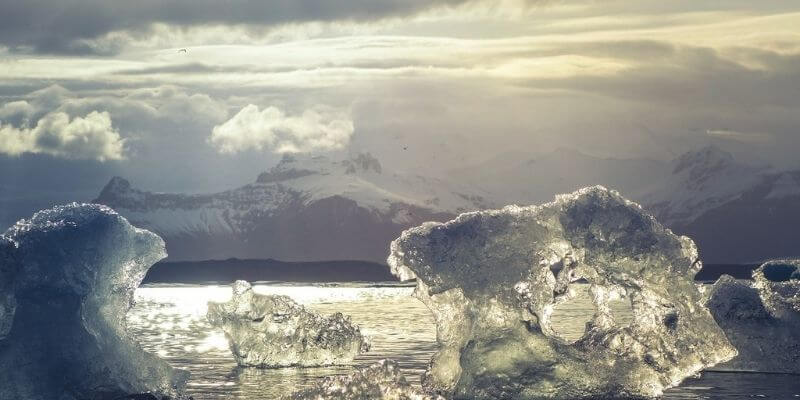
1➤ What is the meaning of the Arctic?
‘Arctic’ is derived from the Greek word ‘arktos’ meaning ‘bear’. The name originates from usra constellations that represent bears and they are always seen in the northern hemisphere. “Antarctic,” then, means “opposite the bear.” or the land without bears.
2➤ Where is the arctic ocean - Arctic Ocean Location
The Arctic Ocean is located in the northernmost region of Earth. It comes within the Arctic Circle that is almost surrounded by Eurasia and North America.
The Arctic Ocean is connected to the Atlantic Ocean and Pacific Ocean by the Greenland Sea and Bering Strait respectively.
The Arctic is almost covered with sea ice throughout the year and almost entirely in winter. Glaciers and icebergs are the largest reservoir of fresh water on the earth, storing about 75 % of the world’s supply.
3➤ What is the size of the Arctic Ocean?
The Arctic Ocean is the smallest ocean of the world. The total area of the Arctic ocean is around 5.4 million square miles. It is about 1.5 times as big as the US and approximately covers 4% of the total earth area.
The average depth of the Arctic Ocean is 3,953 feet and 18,264 feet at its deepest point.
Below are the order of all five ocean based on the size:
- Pacific Ocean
- Atlantic Ocean
- Indian Ocean
- Southern Ocean
- Arctic Ocean
4➤ How many countries border the Arctic?
Following are the six countries’ names that border the Arctic Ocean:
- Russia
- Greenland (territory of the Kingdom of Denmark)
- Iceland
- Canada
- Norway
- The United States
5➤ What 3 continents does the Arctic Ocean touch?
6➤ Arctic Ocean Map
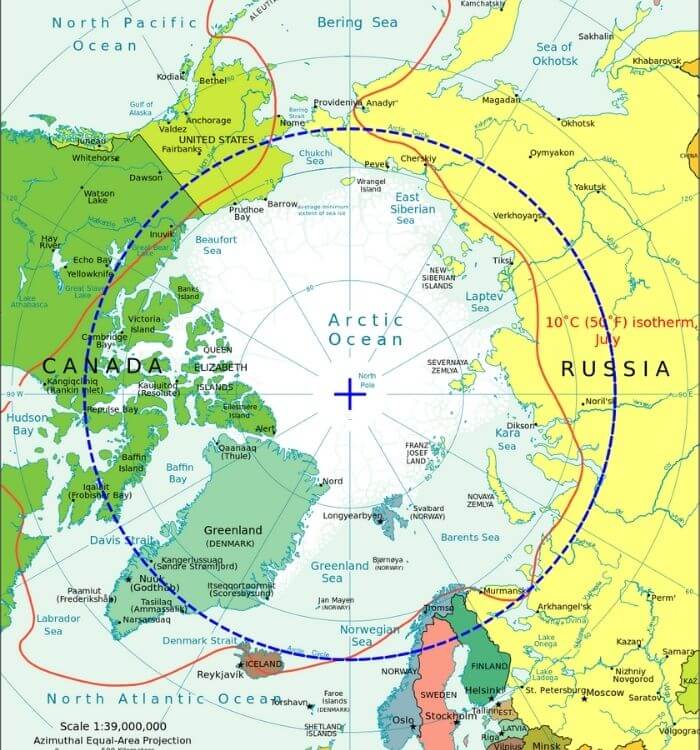
7➤ Arctic ocean temperature
The Arctic Ocean is located in the northernmost region of Earth that is covered by masses of sea ice during most of the year. The temperature of this region remains fairly stable, near the freezing point of seawater. Because the Arctic Ocean consists of saltwater, the freezing point of salt water is 28.8 °F (−1.8 °C).
8➤ Which ocean has the lowest salinity?
On average, the Arctic Ocean has the lowest salinity level as compared to the other 4 oceans. This is because of the low evaporation rate and heavy freshwater inflow from various nearby rivers.
9➤ What is the greatest depth of the arctic ocean?
With a depth of about 5,550 m (18,210 ft), Molloy Hole in the Fram Strait is known as the deepest point of the Arctic Ocean. Although the average depth of the Arctic Ocean is 1,038 m (3,406 ft).
10➤ What's the shallowest ocean in the world?
11➤ Which animals live in the arctic ocean?
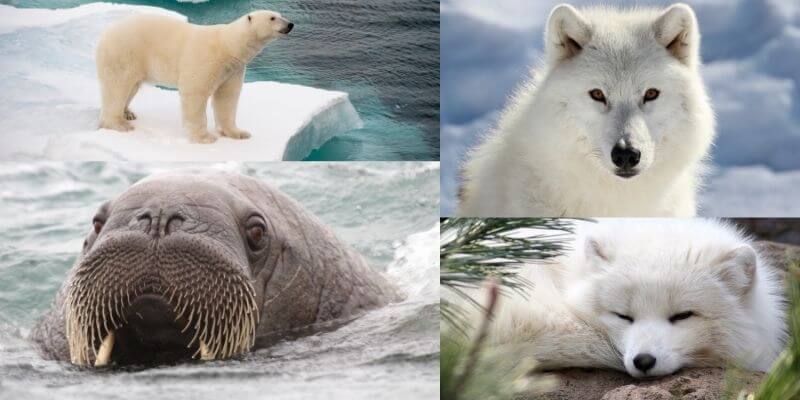
The Arctic Ocean is a land of an amazing array of wildlife, including beluga whale, pacific salmon, brown bear, polar bear, walrus, arctic wolf, arctic fox, narwhal, caribou, moose, musk ox, wolverine, Dall sheep, ermine, lemming, sea otter, spotted seal, ringed seal, ribbon seal, hooded seal, bearded seal, orca, narwhale, arctic wooly bear moth and gray whale.
12➤ What plants live in the Arctic Ocean?
But some plants manage to grow and survive even in this harsh condition. These plants are:
Phytoplankton:
➤ Phytoplankton (Greek words) = phyto (plant) + plankton (made to wander or drift).
➤ Phytoplankton are microscopic organisms that live in saltwater as well as freshwater.
➤ Some phytoplankton is bacteria, some are protists, and most are single-celled plants.
➤ There are approximately 70 species of phytoplankton found in the Arctic seas.
➤ Like land plants, phytoplankton also consumes carbon dioxide, make their food using light energy, and release oxygen.
➤ They are known as the ocean’s primary producers—the organisms that form the base of the food chain.
➤ Did you know? Phytoplankton generates about half the atmosphere’s oxygen, as much per year as all land plants.
➤ Common types of phytoplankton are diatoms, cyanobacteria, dinoflagellates, green algae, and coccolithophores.
Arctic Seaweed:
➤ There are approximately 150 species of seaweed found in the Arctic Ocean.
➤ Common types of seaweed families are Furcellaria, Ceratocolax, and Halosacciocolax.
➤ Many invertebrates eat seaweed, such as jellyfish, crabs, crustaceans, sea urchins, seals, sea turtles, lobster, crayfish, woodlice, etc.
Arctic Moss:
➤ Arctic moss, also known as Calliergon Giganteum, is an amazing aquatic plant species that survive harsh cold environments and very strong winds.
➤ The moss grows underwater or very low to the ground and can store nutrients to use when it cannot grow.
➤ Arctic mosses are known as the turtles of the plant world. It grows very slowly ( 1 cm per year per shoot).
➤ Arctic mosses’ leaves remained green and alive for at least 4 years and shoots live for 7 to 9 years.
➤ Arctic moss has earned its place in the biology books as the slowest-growing, longest-lived freshwater plants ever.
13➤ People in the Arctic region
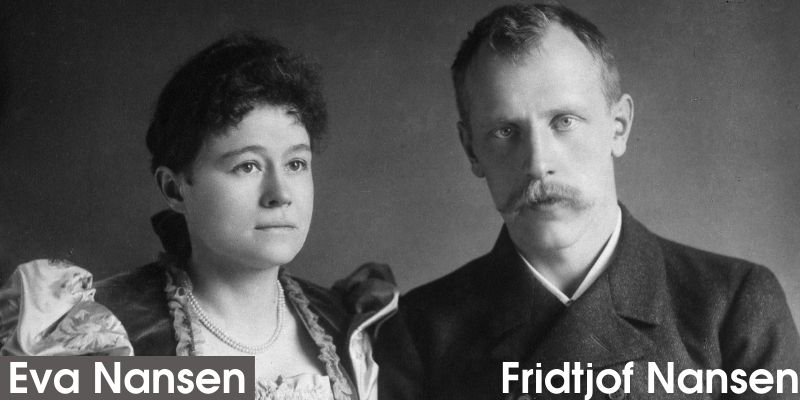
➤ Norwegian explorer and oceanography Fridtjof Nansen was the first known explorer to successfully cross the Arctic Ocean during his North Pole expedition in 1896.
➤ He was awarded the Nobel Peace Prize in 1922 for his humanitarian work with refugees before and after World War I.
➤ Around 4 million people live in the Arctic, including over 40 different ethnic groups of indigenous people.
➤ Saami, Aleut, Inuit, Yupik, Khanty, Evenk, Nenets, and Chukchi are popular groups of indigenous people.
14➤ Arctic ocean food web
It represents multiple pathways by which energy and nutrients flow from one organism to another organism in food. It shows who eats whom.
Read More: The Food Chain & Food Web
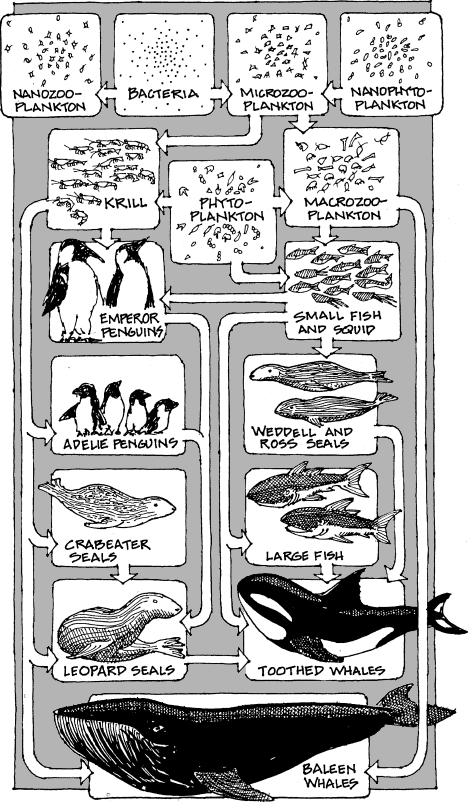
➤ In the Arctic Ocean food web, algae and phytoplankton are the producers who become food for primary consumers such as zooplankton, small fish, and crustaceans.
➤ The Arctic cod is a small fish that plays a vital role in the arctic food web. It eats mostly zooplankton. It is also considered the primary source of food for some whales, seals, and Arctic birds.
➤ Large sharks, billfish, dolphins, toothed whales, and large seals are the top ocean predators.
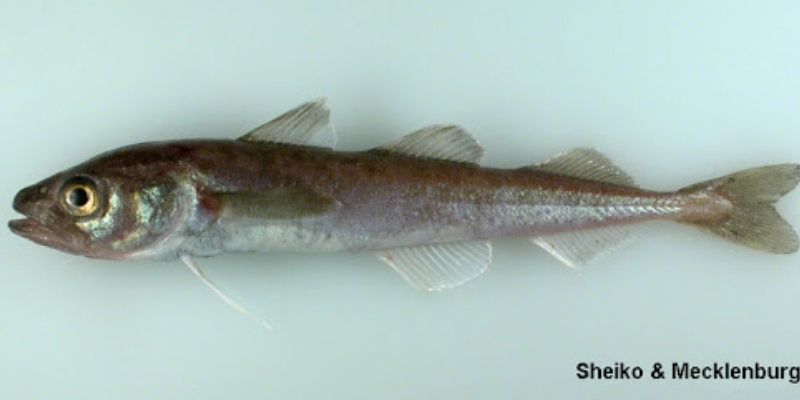
15➤ What is the Largest Arctic Iceberg?
➤ An iceberg is a huge piece of frozen freshwater that originates from a molten glacier floating freely in open water.
➤ The ice sheet, 260 km2 (100 sq mi), a chunk of ice broke off Greenland’s Petermann Glacier on August 5, 2010, considered the largest iceberg to form the Arctic 50 years.
➤ Iceberg B-15 was the largest recorded iceberg by area. It measured around 295 kilometers (183 mi) long and 37 kilometers (23 mi) wide, with a surface area of 11,000 square kilometers (4,200 sq mi)—larger than the whole island of Jamaica. (source)
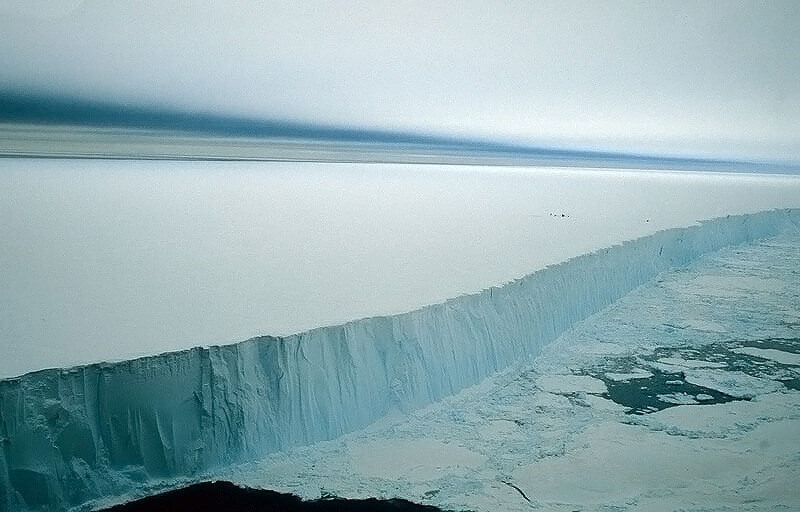
16➤ Who owns the arctic ocean?
As per International Law, the Arctic Ocean region is NOT owned by any country in the world though it is surrounded by 8 nations: Canada, Denmark, Finland, Iceland, Norway, Russia, Sweden, and the United States (via Alaska). The Law of the Sea Treaty governs it.
“Currently, under a treaty called the United Nations Convention on the Law of the Sea (UNCLOS), signatory countries can exploit resources from the seabed out to 370 kilometres off their shorelines. But if a country can provide evidence that particular geological features on the seabed located farther out from that 200-mile limit are connected to the nation’s continental landmass, then the country’s jurisdiction can be expanded deeper into the sea.” source
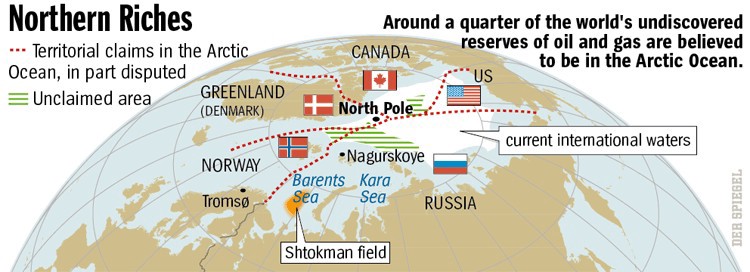
17➤ Arctic Ocean Seas
The Arctic Ocean shares its borders with both continents and marginal seas which are also known as Mediterranean seas.
The Arctic Ocean shares borders with 5 marginal seas. Below is a list of seas of the Arctic Ocean along with area.
- Barents Sea (542,473 sq miles / 1,405,000 sq km)
- Kara Sea (339,770 sq miles / 880,000 sq km)
- Laptev Sea (276,000 sq miles / 714,837 sq km)
- Chukchi Sea (224,711 sq miles / 582,000 sq km)
- Beaufort Sea (183,784 sq miles / 476,000 sq km)
- Lincon Sea (40,000 sq miles / 64,000 sq km)
- Wandel Sea (22,007 sq miles / 57,000 sq km)
18➤ Arctic Ocean Resources
The Arctic ocean possesses massive mineral resources reserves including Oil, Natural Gas, Iron Ore, Copper, Zinc, Nickel, Phosphates and Diamonds.
Did you know? Approximately 25% of the undiscovered petroleum is believed to be located in the Arctic Ocean.
